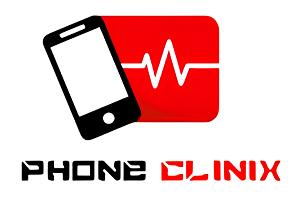There’s nothing more frustrating than a dead phone especially when all your contacts, precious photos, and vital documents are locked away inside it. Whether it’s due to water damage, a system crash, or an unexpected hardware failure, a dead phone can feel like a digital nightmare. Fortunately, modern tools and techniques can help you recover your data without losing your mind—or your memories.
In this article, we’ll walk you through how to deal with a dead phone and recover your data using a combination of methods, including the use of phone diagnostic software, which has become a game-changer for both professionals and average users. No need for technical wizardry or expensive repair shops you can often do it all from the comfort of your home.
What Happens When a Phone Dies?
Before diving into solutions, it helps to understand the root of the problem. A “dead” phone typically means one of the following:
- The phone won’t power on at all.
- It’s stuck on a boot loop or logo screen.
- The display is black, but the phone vibrates or makes sound.
- The system crashes and becomes unresponsive.
The issue could stem from:
- Battery failure
- Corrupt system software
- Physical damage (water, impact)
- Internal component malfunction
Each scenario requires a slightly different approach to recover data—but don’t worry, we’ll cover them all.
Step 1: Don’t Panic—Start with the Basics
Sometimes the simplest solutions can bring a phone back to life.
Try a Hard Reset
For Android:
Hold the Power + Volume Down buttons together for 10–20 seconds.
For iPhone:
Quickly press and release Volume Up, then Volume Down, then hold the Side button until the Apple logo appears.
If this doesn’t work, move on to charging your device with a known working cable and charger, ideally directly into a wall outlet. A dead battery or faulty cable might be the only issue.
Step 2: Connect to a Computer
Even if your phone’s screen is black or it won’t fully boot up, it might still be recognized by a computer.
For Android:
- Plug your phone into a PC using a USB cable.
- Use Windows Explorer to check if your device is detected.
- If so, you can access internal storage and transfer your files.
For iPhone:
- Connect the phone to iTunes (or Finder on macOS Catalina and later).
- If it shows up, back it up immediately.
If your phone is not recognized, don’t worry. That’s where phone diagnostic software steps in.
Step 3: Use Phone Diagnostic Software to Recover Data
This is where technology becomes your best friend. Phone diagnostic software is designed to detect and analyze hardware and software issues in smartphones—even those that appear “dead.” These tools can often extract data even if the screen is non-functional or the OS is corrupted.
What is Phone Diagnostic Software?
Phone diagnostic software is a specialized tool that runs diagnostics, identifies faults, and often retrieves data from devices that are otherwise inaccessible. These tools are commonly used by repair professionals, but many offer user-friendly interfaces for everyday users.
Popular Phone Diagnostic Software Options:
- Dr.Fone – Data Recovery (iOS/Android)
Known for its easy UI and broad compatibility. Can recover photos, contacts, messages, WhatsApp data, and more—even from non-responsive phones. - Tenorshare UltData
Offers deep scan and recovery options for deleted or inaccessible data. Supports iOS and Android. - iMobie PhoneRescue
Allows selective recovery and even fixes system crashes in iPhones. - iToolab RecoverGo (Android/iOS)
Designed to extract files from various scenarios—bricked phones, system crashes, broken screens. - Phone Doctor Plus (Diagnostic)
While not specifically for recovery, this diagnostic app is great for identifying hardware-level issues before attempting a fix.
Step 4: Data Recovery Process Using Phone Diagnostic Software
Here’s a general process to follow when using such tools:
- Install the software on your PC or Mac.
- Connect your dead phone via USB.
- Launch the diagnostic tool and select “Recover from Broken Phone” or similar.
- Follow on-screen prompts—these usually include booting the phone into Download Mode (for Android) or DFU Mode (for iPhone).
- Let the tool scan your device.
- Preview and selectively recover files (photos, contacts, messages, etc.).
Note: Always use trusted and verified tools. Avoid cracked or pirated versions as they may compromise your data.
Step 5: Advanced Solutions for Severely Damaged Phones
If the phone has severe physical damage—like a broken motherboard or fried internal circuits—the only way to recover data might be professional data recovery services. However, these are expensive and should be considered a last resort.
That said, some software tools like FonePaw Broken Android Data Extraction or iMyFone D-Back offer surprisingly powerful results even with serious system-level issues.
Tips to Prevent Future Data Loss
Let’s face it: once you’ve recovered your data, the last thing you want is to go through this nightmare again. Here’s how to safeguard yourself:
- Enable Cloud Backups
Use Google Drive (Android) or iCloud (iOS) to automatically back up your data. - Regular Local Backups
Connect your phone to a PC every few weeks and save your important files manually. - Use Reliable Diagnostic Apps
Regularly scan your phone with a diagnostic tool to spot issues early. - Avoid Overheating and Water Exposure
These are common culprits in sudden phone death. - Invest in a Quality Case and Screen Protector
Physical protection can prevent accidental damage that could lead to data loss.
Final Thoughts
Losing access to your phone doesn’t mean losing your data. With the right tools and a calm approach, you can recover your valuable files without stress. Phone diagnostic software plays a crucial role in this process, providing deep-level access and insight into what’s going wrong—and how to fix it.
Whether it’s a frozen screen, an unresponsive operating system, or complete hardware failure, there’s a solution for nearly every situation. So next time your phone goes dark, take a deep breath, follow these steps, and let technology do the heavy lifting.



